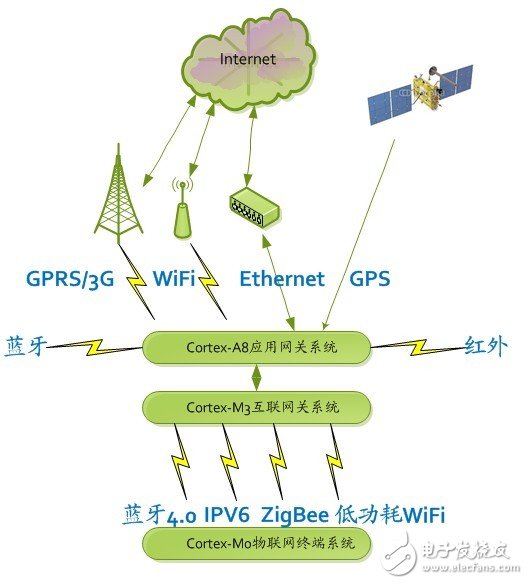If you have a little understanding of the operating system, you must have heard of Windows, OS X and even Linux, but you may not have heard of ConTIki. Today, the Internet of Things has become a hot topic, ConTIki is attracting more and more people's attention.
ConTIki is a lightweight operating system. As an open source system, it provides a platform for developers and entrepreneurs to develop widgets or gadgets for network connectivity on the Internet of Things without having to build the underlying operating systems needed for gadgets. In the past decade, it has been favored by many hackers, scholars, and companies that manufacture sensors and trackers. Developers like it because it is lightweight, free and mature. About five years ago, the Andrew Markham team at Oxford University did an interesting thing. They used ConTIki to invent a wireless network tracking system that could be used underground to study the behavior of the cockroach and solve the problem that GPS could not work underground. The problem.

The biggest advantage of Contiki is that it is very small. Linux runtime requires at least 1MB of RAM, and Contiki only takes a few kilobytes to get it. Its creator, Adam Dunkels, managed to integrate an entire operating system, including a graphical user interface, network software, and a web browser into a storage space of less than 30KB, making it a small, low-power chip on IoT devices. There is no pressure on the run.
After more than a decade of development, Contiki has begun to commercialize applications, and many consumer technology companies have begun to work with Contiki, such as the smart light bulb LiFX, and Nest's competitor Tado. Dunkels believes that the Internet of Things market is very large, with too many directions, and has great application prospects in the fields of industrial and building automation control. To support Contiki's rapidly evolving business applications, Dunkels has left his research at the University to set up Thingsquare, a startup that is dedicated to providing back-end support for cloud services for Contiki devices. The goal is to make it easier for developers to connect their hardware devices to their smartphones and networks.
Contiki will soon face competition from Microsoft, which recently released the Windows for the Internet of Things. But Microsoft's new system is not open source, it's free for devices under 9 inches, and Contiki has an eleven-year lead. In the hot environment of the Internet of Things, a good development system is a must, and I believe that more people will join this competition in the future.
Deluxe Rice Cooker was one of electric type rice cooker , but it`s the most popular type of electric rice cooker . especially famous in Southeast Asia area with its good appearances with various functions. Not only its outer shell could be customized with different demands, but also it speeding cooking , saving times and electricity, enhancing our lifestyle
Features
The inner pot is made of solid and durable aluminum alloy of high intensity , such as non-stick inner pot , stainless steel inner pot and honeycomb patterned inner pot with non-stick coating.
There are some models that use stainless steel instead of aluminium .Various other materials, such as copper, pure carbon, ceramic, and diamond powder coating, may be used for higher heat conductivity or better taste.
Applications
Multifunction , can cooking rice, soup and much more. added cooking versatility with supplied steam tray.
Some rice cookers have settings for congee, a type of rice porridge called okayu in Japanese, Juk in Korea, and zhou in Chinese.
More elaborate recipes are possible using a rice cooker, and there are cookbooks devoted entirely to dishes prepared using a rice cooker. It is possible to cook soups, stews or sponge cakes in electric rice cookers. By simply adding ingredients and setting it to "warm", a rice cooker cooks the contents at about 65 °C (150 °F). In a few hours, the stew is fully cooked and ready to eat.
Deluxe Rice Cooker
Deluxe Rice Cooker,Cylinder Rice Cooker,Mini Rice Cooker,Stainless Steel Rice Cooker
Guangzhou Taipeng Electrical Appliances Technology CO., LTD. , https://www.taipengelectric.com